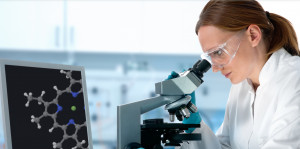Imagine knowing how likely you are to get cancer, or Parkinson’s, or asthma and be able to take necessary precautions at the earliest opportunity. It’s a reality that is not that far into the future.
Once costly analysis of data is becoming evermore mainstream. Machine learning and analytics can now unlock insights from mountains of health-related data. Once found, patterns and correlations can pinpoint risks and enable diagnoses based on statistics and probabilities, even before doctors fully understand the scientific links.
These predictive analytics have the potential to revolutionize care, enabling better prevention, better decision-making and more specific treatment plans. One application draws on the connection between what’s going on in your gastrointestinal tract and what’s likely to happen in other parts of your body, foreshadowing an innovative approach to diagnosis and treatment.
“Analyzing the gut health and, in turn, the condition of the individual can provide insights in to designing personal therapies,” says Dr Sharmila Mande, chief scientist at TCS Research, part of Tata Consultancy Services. “Eventually this can be used to come up with personalized and individual therapeutics.”
Supercharging health
Scalable and accurate deep learning with electronic health records - npj Digital Medicine 1, Article Number: 18 (2018)
While many scientists and health professionals already embrace a holistic approach to diagnoses, an acceleration in what computers and algorithms are capable of, as well as a proliferation of data held electronically, has supercharged the possibilities.
Work currently underway builds on what’s gone before, like the sequencing of the human genome in the early 2000s. By additionally categorizing the microbiome, the bacteria and other microorganisms in our gut, Mande’s work holds the promise of homing in on markers – or indicators of the risk of particular diseases– before they’ve even started to manifest.
“One of the advantages is that technology will help us identify what is causing that particular disease,” Mande says. “And you can perform a corrective measure, for example giving appropriate nutritional therapies to individuals.”
Using data and computers to produce timely, fuss-free diagnostics has broad appeal. A study published by the University of Chicago, Stanford University, the University of California and Google underscores how precise these predictions can be. Using electronic health records, the researchers analysed more than 46 billion data points and were able to accurately predict a hospital patient’s likely health outcomes, length of stay and probability of readmission.
Gut feeling
For the TCS researchers, mapping the microbiome offers the potential to improve long-term health outcomes around the world. Their Gut Health Score draws on more than a decade of research into the human microbiome and uses stool samples to assess what’s going on inside each patient and how that translates to disease risk.
It can evaluate the probability of a range of conditions including diabetes, asthma, cardio-vascular diseases, Parkinson’s and some cancers, and can point to which additional health tests or probes are needed.
A shift to predictive analytics like this means that within 20 years, 90% of all health jobs will require some digital skills, according to a UK government commissioned report, which also says that all future staff will need digital and genomics literacy.
While it’s easy to imagine the myriad useful applications, using technology and digital diagnoses does throwup some ethical questions about how best to balance patient privacy and safety with innovation. Proper regulation and data protection could help shore up confidence as sensitive areas like healthcare move in to the digital age.
Unravelling the data will pave the way to bespoke health plans and therapies, Mande explains. For example, where certain unwanted bacteria groups are deemed to be too high, personalized nutritional regimes or supplements like prebiotics and probiotics could be prescribed.
Looking to the future, such diagnostic tools are likely to be commonplace.
“You can monitor the health of an individual, and indicate risk of any disease, just based on stool samples,” Mande says. “Individual therapeutics can then be used to improve the symptoms or help improve the health of that particular gut. And, in turn, that person.”

